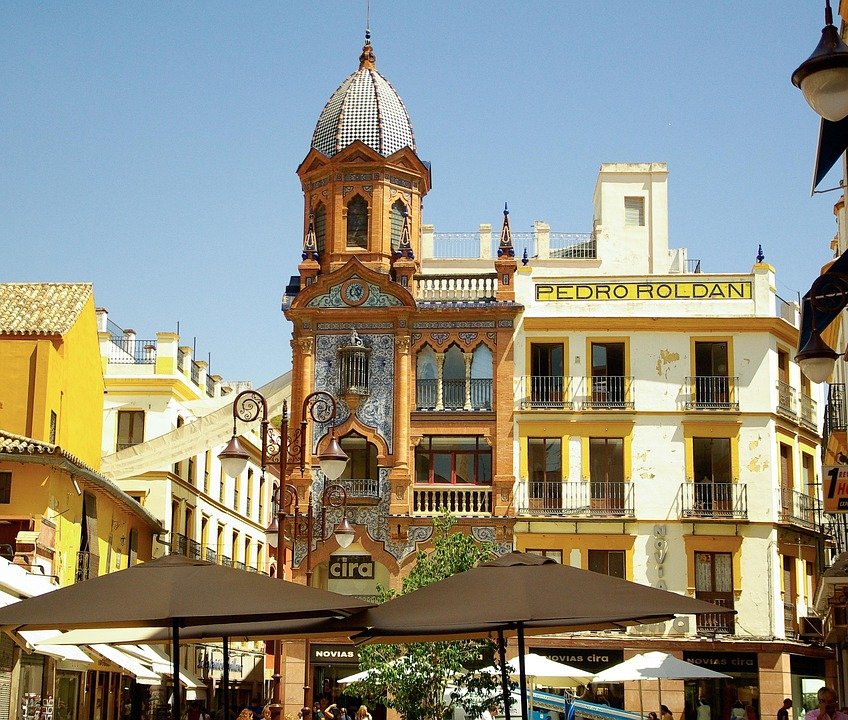Wondering when to go to Seville without running into huge crowds or bad weather? Planning a trip to this stunning Spanish city involves more than just picking a date; it's about aligning your travel goals with the perfect time to enjoy all that Seville has to offer. Whether you're after budget-friendly options, vibrant cultural experiences, or simply want to soak in the sun comfortably, the timing is key!
Overview of Seville’s Climate
First things first, let's talk about the weather in Seville. This charming Andalusian city experiences a Mediterranean climate, which means you can expect dry summers and mild winters. The temperature in Seville can swing quite a bit — during summer, you might find yourself sweltering in temperatures frequently exceeding 35°C (95°F). Conversely, winters are generally pleasant but can drop down to around 6°C (43°F) at night.
The best months to avoid extreme weather are typically spring (March to May) and fall (September to November). These temperate seasons are characterized by comfortable daytime temperatures, making them excellent for sightseeing, outdoor activities, and leisurely strolls through the city's iconic landmarks.
Month-by-Month or Seasonal Breakdown
Spring (March to May)
Weather: Spring sees pleasant temperatures ranging from 15°C to about 25°C (59°F to 77°F).
Events: Seville comes alive in April, hosting the famous Feria de Abril (April Fair), where locals celebrate with flamenco, bullfighting, and parades.
Pros and Cons: The beauty of blooming flowers and lively events makes this an alluring time to visit. However, booking in advance is crucial, as hotels fill quickly due to the influx of tourists.
Best for: Ideal for culture enthusiasts and those eager to experience the city's vibrant social scene.
Summer (June to August)
Weather: Expect scorching heat with temperatures often exceeding 35°C (95°F) during the day.
Events: The temperatures might deter some, but the region's intense character remains, with urban festivals like “Noche en Blanco” lighting up the city.
Pros and Cons: Summer is packed with energy, and you'll find plenty of activities. But beware — this is also peak tourist season; crowds abound, and prices are at their highest.
Best for: Beach lovers and vibrant nightlife seekers, though prepare for the heat.
Fall (September to November)
Weather: Temperatures cool down, averaging around 25°C (77°F) in September and dropping further to 15°C (59°F) by November.
Events: The Bienal de Flamenco (a renowned Flamenco dance festival) occurs in September, showcasing the art form's beauty.
Pros and Cons: Fall is often considered one of the best times to visit due to the pleasant weather and slightly lower tourist traffic compared to other seasons.
Best for: Great for budget travelers and outdoor enthusiasts who want to explore historical sites without the summer crowd.
Winter (December to February)
Weather: Average temperatures hover around 6°C (43°F) at night and can reach up to 16°C (61°F) during the day.
Events: The holiday season is magical in Seville, highlighted by Christmas markets and festive decorations.
Pros and Cons: Fewer tourists mean cheaper accommodations and a more authentic experience. However, chilly evenings might require additional layers.
Best for: Ideal for solo travelers or couples seeking a more intimate, quieter experience, especially around Christmas.
Tips Based on Travel Style
So, when exactly is the ideal time to visit Seville? It really depends on what you're looking for:
For Budget Travel:
Travel between late fall and winter (November to February). Hotel prices drop significantly, making it easier to stick to your budget while still enjoying a culturally rich experience.
For Avoiding Crowds:
Consider visiting in the shoulder months of late March or early October. You'll still enjoy pleasant weather while navigating fewer tourists.
For Outdoor Activities or Cultural Events:
Spring is your best bet! With the Feria de Abril and beautiful weather, it's a perfect time for tapas tours, sightseeing, and festivals.
For Romantic or Solo Trips:
Late fall or winter offers a more serene vibe. Enjoy cozy evenings, quiet piazzas, and beautiful holiday lights. It's incredibly romantic to wander through the historic Santa Cruz district with fewer people around.
Ultimately, your adventure in Seville can be tailored perfectly, regardless of when you choose to visit!
It really depends on what kind of experience you're looking for. Some travelers love the buzz and excitement of April due to Feria de Abril, while others aim to bask in the quieter atmosphere of January while exploring the historic sites at a leisurely pace. Whatever your preference, Seville has something special year-round, tailored just for you.
FAQs
Is April a good time to visit Seville?
Absolutely! April hosts the famous Feria de Abril, making it lively and vibrant, though prepare for crowds.
When is the rainy season in Seville?
Typically, the rainy season falls in late fall and winter, mainly from November to January.
What's the cheapest time to visit Seville?
Visiting between November and mid-February will usually give you the best opportunity for budget-friendly rates.
What's the peak season in Seville?
Summer (June to August) is the peak tourist season, with the highest prices and crowds.
So, there you have it! Your guide to finding the best time to visit Seville, framed around your needs and preferences. Happy travels!








